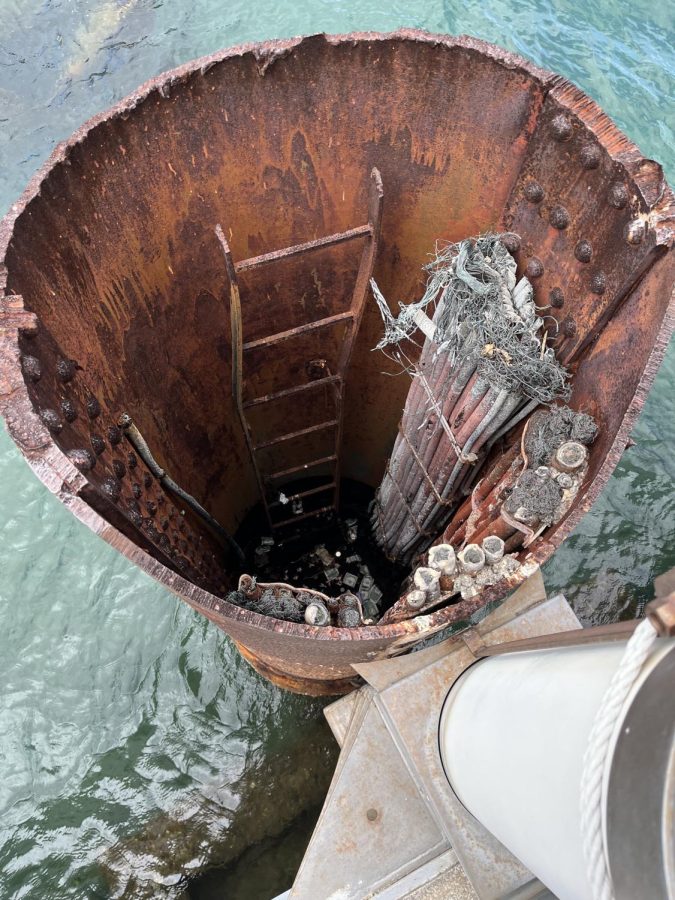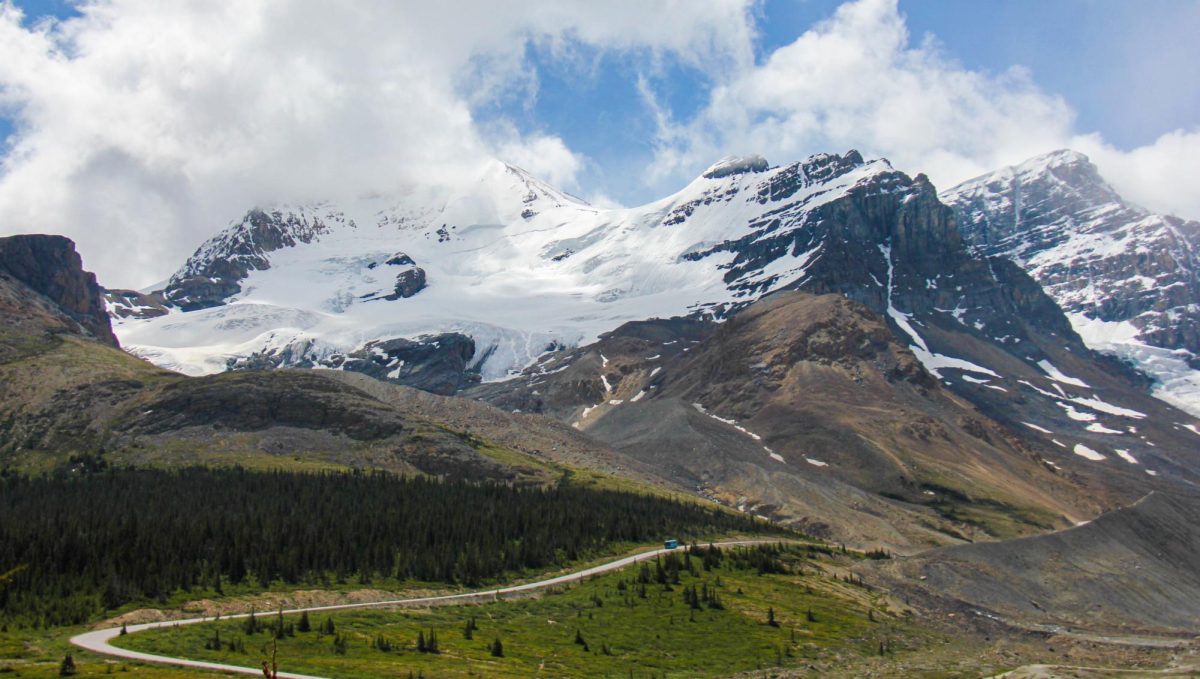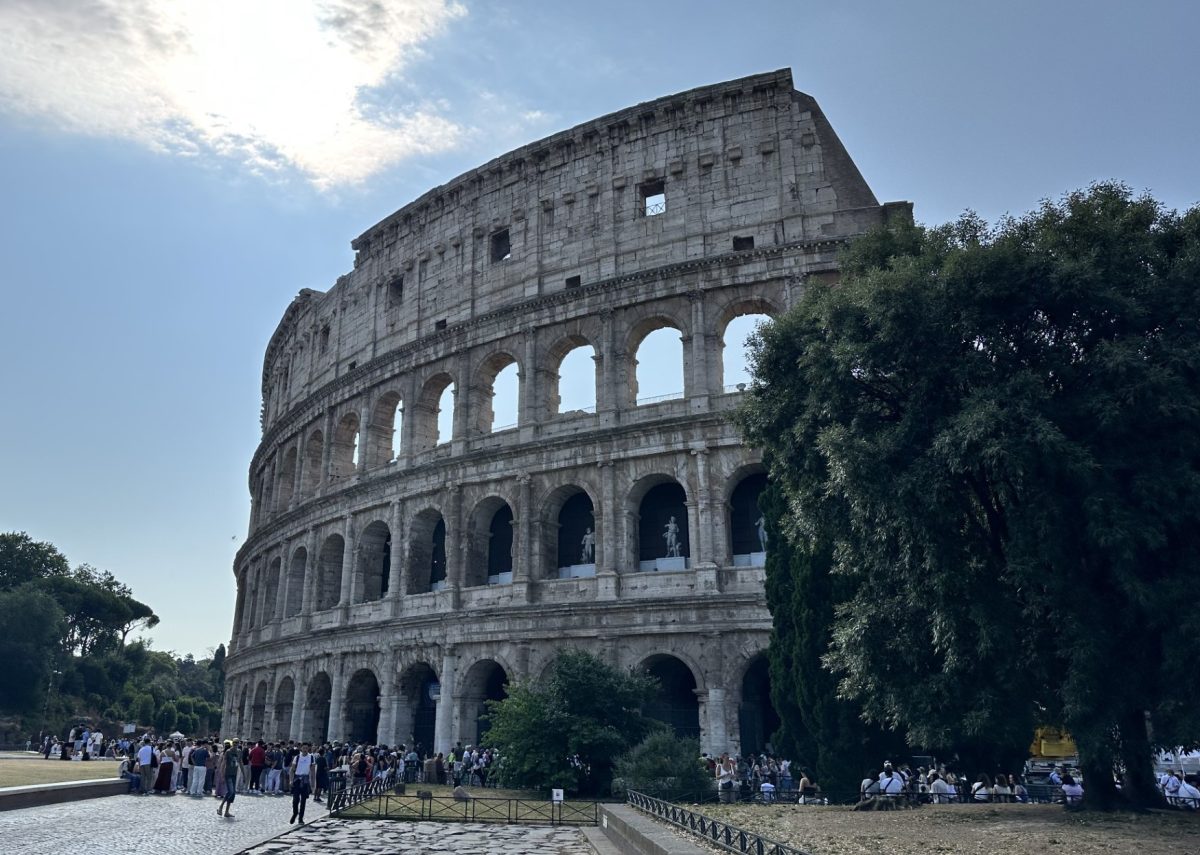My trip to Hawaii: The age of over-tourism
July 31, 2022
There isn’t much to say about Hawaii that hasn’t been written, painted, or sung about in great length.
This July, my family and I explored the 11,000 miles of unique culture and geography found on the islands of Oahu and Hawaii (a.k.a. the Big Island).
The Arrival

From the moment I stepped outside the Honolulu International Airport, chickens were active in nearly every direction. They were wandering the streets, pleading for food scraps — and literally crossing the road. It’s a charming detail and certainly a step up from the pigeons littering New York City.
Yet, the similarities between Honolulu and New York don’t end with pesky birds. Just like New York, large hotel complexes lined Oahu’s coast. A bustling city, filled with architecture and tourists, did not reflect the tropical, Piña colada-drinking, hula dancer-filled paradise ingrained into my imagination.
Maybe I just did not know where to look.
Food

(Emily Boyle)
Oahu’s North Shore felt like a completely different planet.
Winding roads, quaint little houses, and an expanse of foliage filled my window. My cousin, a nearly professional world traveler and staunch enjoyer of food, parked our rental car beside a graffiti-ridden truck. You wouldn’t have considered it anything special, if it was not for the hoard of hungry faces buzzing in its wake.
Giovanni’s Shrimp Truck is family-owned and has been voted Oahu’s Best Food Truck six years in a row. I could not have prepared myself for the sticky fingers and rich flavor they provided. The short menu of only five items almost felt like bragging, but any bragging on Giovanni’s behalf was justified.
After eating our fill, we wandered along the local shops of North Shore. Artists, fruit vendors, and coffee shops clustered the area. It was a beautiful reflection of life.
A precious beauty that seemed all too rare.
Pearl Harbor

There’s nothing more solemn than bloodshed.
I confronted this reality in my visit to Pearl Harbor. Standing on the USS Arizona Memorial, the image of more than 1,000 dead bodies residing permanently beneath my feet persisted fiercely.

During silent contemplation, I watched other tourists laugh, shout, and smile. Leaning over the railing, I saw coins and dollar bills desecrate the visible wreckage of the ship.
The USS Missouri was more relaxed. I watched my grandfather’s eyes light up at the familiar equipment, layout, and structure of the ship, undoubtedly stirring up memories from his service in Vietnam.
Wandering below deck with my cousin, we began to lose ourselves in the intricacies of the ship. As if sent through a time machine, we struggled to find our way back to modern day.
When we did, a new adventure lay ahead.
Wildlife
What idiot would jump into shark-infested waters?
My cousin and I, that’s who.

One Ocean Diving gives dare-devils the opportunity to free swim with sharks, the most common of which are the Galapagos. I had gotten a closer look at this particular species when I entered a shark cage two days before, but the thrill of swimming in open water added a new layer of excitement.
The One Ocean employees began pointing out specific sharks they’ve seen from previous dives. Some even had names — like Smiley, the 14-foot Tiger shark. In others, they recognized physical abnormalities.

The crew easily identified one Galapagos shark due to its gaping mouth. Unable to hunt prey, the employees watch him get skinnier and skinnier with each dive. According to them, his jaw was most likely broken by a fisherman’s hook, a practice that was largely banned last January.
History and Culture
Do not take rocks from Hawaii.
As someone with a vast collection of minerals, crystals, and stones, collecting a small keepsake from a pretty beach is almost second nature. But to native Hawaiians, their land is sacred.
According to legend, anyone who steals a rock is cursed by Pele, the goddess of volcanoes. The story says Pele views each rock as her child, enacting vengeance against thieves until they return what they stole.

Standing in the City of Refuge, surrounded by beautiful stones lining the shore, an overwhelming air of sanctity lingered boldly. Officially named Pu’uhonua O Honaunau National Historical Park, the land I walked on represented a chance at freedom for ancient Hawaiians.
Until 1819, the Kapu System required the enforcement of sacred laws through the penalty of death. These laws included walking in the footsteps of a chief, looking at a chief, or, for women, eating in the presence of men. By reaching Pu’uhonua, lawbreakers could seek forgiveness and purification from priests. The land was considered a safe haven, and upon arrival, they would not be killed.
Looking into the coast, the intense history of this setting weighed on me. Was I welcomed here?
Preserving Hawaii
Hawaii faces a modern challenge.
With increased tourism, the price of real estate and rates of COVID-19 sky-rocketed. The state has even seen a water shortage, due in part to over-tourism.
Locals I have met say it is common to have more than one job to supplement the high cost of living. Additionally, unprepared tourists who disrespect the community’s wildlife, culture, and land also pose an issue. With roughly 10 million travelers visiting Hawaii per year, it’s hard to imagine none of these concerns arising.
With all of this to say, I was incredibly privileged to visit the state of Hawaii. But given this privilege, it is important to reflect on how one’s actions can affect a global community.
Whether or not you choose to visit Hawaii for yourself, always remember to treat the land and its people with great respect. Even back home, I try to carry the famous “Aloha Spirit.”
–July 30, 2022–























Mit Dier • Aug 1, 2022 at 9:02 am
Tourism was closed down and Covid rates NEVER “sky rocketed. None of these three things had anything to do with one another. “Increased tourism, the price of real estate and rates of COVID-19…” Hawaii had the least amount of Covid. Stop with the nonsense. Real estate sky rocketed because people could work at home and the super paranoid thought Hawaii was safe catching Covid and all those inflated mainland numbers.
And if you really want to know why Hawaii had such high numbers then please look up Abrien Aguirre Hawaii Whistleblower Discusses Over-Labeling.
Sam Carnaggio • Aug 21, 2022 at 9:17 am
Chill out. This is a rising high school senior writing this. She took the initiative to write some positive views. Let’s be patient and courteous as she shares her thoughts.
John Schneck • Aug 24, 2022 at 8:51 pm
The probem was our lame Govemor kept the island closed far far longer then it should of been hense the “blame covid”. Blame grandma Ige. Good writing. Love the comments about Pearl.
Ray Smith • Jul 31, 2022 at 3:29 pm
Sharks are getting more dangerous because of the shark cages – humans feeding sharks is not a good idea.
Jay • Jul 31, 2022 at 2:56 pm
There not an island of Kona.
Island of Hawaii or Big Island.
adviser • Jul 31, 2022 at 3:09 pm
Thank you! We will correct it now.
Thank you for reading Headliners!
Tim Trevarthen • Jul 31, 2022 at 1:57 pm
Wonderful article with some good suggestions for places to visit but I just have one correction. Kona Town is not an island but is part of our beautiful island of Hawai’i. Mahalo Nui Loa.
adviser • Jul 31, 2022 at 3:11 pm
Thank you, Tim! We will correct it now.
Thank you for reading Headliners!
Sheila • Jul 31, 2022 at 1:38 pm
This Is beautifully written, as someone that lives in Hawaii it’s always nice to hear someone appreciate all it has to offer. And also remembering to remind people to respect the land and its beauty! Aloha! Mahalo!
Lisa • Jul 31, 2022 at 1:38 pm
Nicely written. But, we are the island of Hawaii (sometimes known as the Big Island). Kona, like Hilo, is a town on Hawaii island. This is not Kona island.
adviser • Jul 31, 2022 at 3:15 pm
Thank you Lisa for taking the time to read and comment. We are fixing that now.
Thanks a lot for reading Headliners!